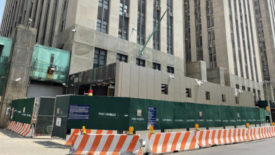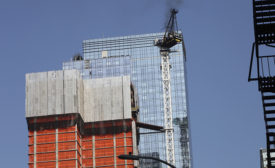Buildings
Sustainability
Manhattan's Landmark US Custom House Getting Greener-Material Repairs
Federal building using $11 million from Inflation Reduction Act
Read More
Correctional Facilities
NYC to Reissue RFQ for Manhattan Jail Following Construction Market Changes
Read MoreConstruction Accidents
Loaded Boom of Burning Tower Crane Collapses in Manhattan, Injuring Six
Read MoreGreen Buildings
Resetting Manhattan's Standard for Sustainability
555 Greenwich Street team reflects on creating a benchmark for energy efficiency
Read More
The latest news and information
#1 Source for Construction News, Data, Rankings, Analysis, and Commentary
JOIN ENR UNLIMITEDCopyright ©2024. All Rights Reserved BNP Media.
Design, CMS, Hosting & Web Development :: ePublishing













